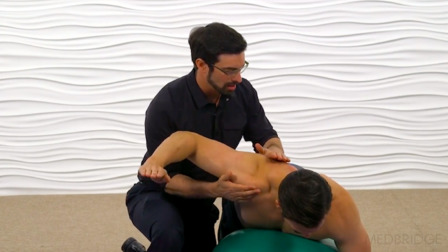This continuing education course is hosted on the Medbridge platform. It will utilize the movement system as a framework to assess the biomechanics of throwing. You will learn how to classify scapular, humeral, and thoracic movement patterns as they relate to observation range of motion. You will then advance your movement assessment skills by learning the biomechanics and critical events of a throw. Based on your movement observations and biomechanics knowledge, you will then learn how to classify movement dysfunction and provide sport-specific treatments to correct inefficient movement.
Description
Chapters & Learning Objectives
1. Speed: Movement and Performance
In this chapter, Dr. Vagy will discuss a framework to assess and treat athletes to improve their speed, power, and agility. He will introduce advanced techniques to properly assess these three key components of sport and present strategies to make them easy to assess within the clinic setting. He will teach you the four main components of speed: reaction time, acceleration, maximum velocity, and speed maintenance. He will go on to show you how to quantify speed with both movement and performance testing in a clinical setting and how to use the results from your testing to improve speed performance.

2. Power: Movement and Performance
In this chapter, Dr. Vagy will teach you research-validated tests to assesses athlete lower extremity power. This includes vertical hop, triple hop, and drop vertical jumps. You will learn how to use a landing error scoring system to assess movement and plyometric tests to quantify power output. Finally, you will learn how to use the results of these tests in a clinical setting to improve athlete power through plyometric exercise progressions.

3. Agility: Movement and Performance
In this chapter, Dr. Vagy will teach you how to assess and treat athlete agility. This includes research-supported return-to-sport protocols that analyze deceleration, lateral shuffle, and plant and cut movements. You will be introduced to performance tests for change of direction speed and reactive agility and will learn how to quantify agility with both movement and performance testing in a clinical setting to improve overall athlete agility performance through fundamental agility exercises.






